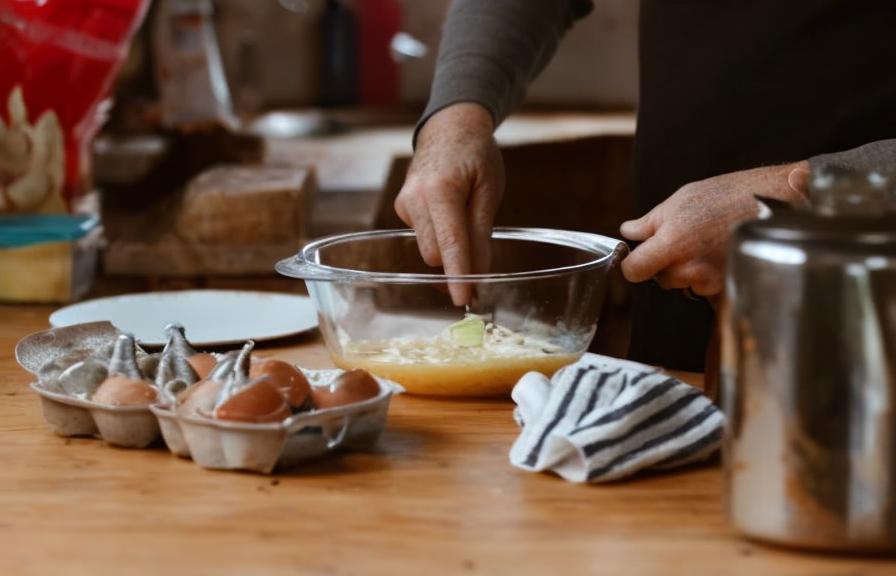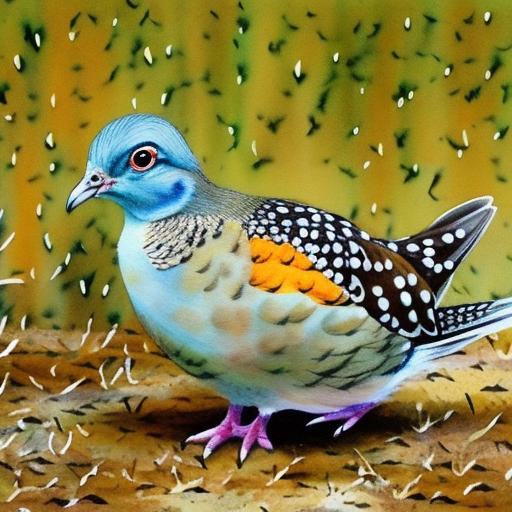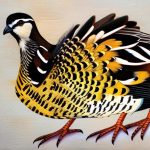Button quail, also known as Chinese painted quail, are small, ground-dwelling birds that are popular among avian enthusiasts for their unique appearance and low maintenance requirements. Breeding button quail can be a rewarding experience for bird lovers, as it allows them to witness the entire life cycle of these fascinating creatures. Button quail breeding requires careful planning, attention to detail, and a nurturing environment to ensure the health and well-being of the birds. In this article, we will explore the various aspects of button quail breeding, from selecting the right breeding pair to caring for the chicks, as well as common challenges and tips for successful breeding.
Key Takeaways
- Button quail breeding is a rewarding hobby that requires careful selection of breeding pairs and proper care for the chicks.
- When selecting a breeding pair, it is important to consider their health, age, and compatibility to ensure successful breeding.
- Setting up the breeding environment involves providing a suitable cage, nesting materials, and a balanced diet to encourage breeding behavior.
- Egg incubation and hatching require a stable temperature, humidity, and regular monitoring to ensure the health of the developing chicks.
- Caring for button quail chicks involves providing warmth, proper nutrition, and a clean environment to promote healthy growth and development.
Selecting the Right Breeding Pair
Selecting the right breeding pair is crucial for successful button quail breeding. When choosing a breeding pair, it is important to consider the birds’ health, age, and genetic diversity. Look for birds that are active, alert, and in good physical condition. Avoid birds that show signs of illness or injury, as they may not be suitable for breeding. It is also important to select birds that are of breeding age, which is typically around 3-6 months old. Breeding older birds may result in decreased fertility and reproductive success. Additionally, genetic diversity is essential for maintaining the overall health and vitality of the button quail population. Avoid breeding closely related birds, as this can lead to genetic abnormalities and health issues in the offspring. By carefully selecting a healthy, young, and genetically diverse breeding pair, you can increase the likelihood of successful breeding and produce strong, healthy chicks.
Setting Up the Breeding Environment
Creating a suitable breeding environment is essential for the health and well-being of the breeding pair and their offspring. The breeding enclosure should provide ample space for the birds to move around freely and engage in natural behaviors such as dust bathing and foraging. A spacious enclosure also reduces stress and aggression between the breeding pair, which can impact reproductive success. The enclosure should be equipped with appropriate nesting materials, such as fine grass hay or shredded paper, to provide a comfortable and secure nesting site for the female quail. Additionally, the enclosure should be equipped with a shallow dish of clean water for drinking and bathing, as well as a variety of perches and hiding spots to accommodate the birds’ natural instincts. Maintaining a clean and hygienic environment is also crucial for successful breeding. Regularly clean the enclosure, replace soiled bedding, and provide fresh food and water to ensure the health and well-being of the breeding pair and their offspring.
Egg Incubation and Hatching
Once the breeding pair has successfully mated, the female will begin laying eggs in the nesting site provided. Button quail eggs are small and speckled, typically measuring around 0.5 inches in length. The female may lay one egg per day until she has laid a clutch of 5-10 eggs. It is important to carefully monitor the eggs during this time to ensure they are being properly incubated. If the female is not consistently sitting on the eggs, it may be necessary to remove them and place them in an artificial incubator to ensure proper development. The eggs should be kept at a consistent temperature of around 99-100 degrees Fahrenheit and high humidity levels of 60-70% for successful incubation. After an incubation period of approximately 16-18 days, the eggs will begin to hatch. It is important to closely monitor the hatching process and provide assistance if necessary. Once hatched, the chicks will require immediate care and attention to ensure their survival.
Caring for Button Quail Chicks
Caring for button quail chicks requires careful attention to their specific needs during the early stages of development. Newly hatched chicks are fragile and require a warm, draft-free environment to thrive. A brooder box equipped with a heat lamp or heating pad can provide the necessary warmth for the chicks. The brooder box should also be lined with clean bedding material, such as paper towels or pine shavings, to provide a soft and comfortable surface for the chicks to rest on. Additionally, it is important to provide a constant supply of fresh water and high-quality chick starter feed formulated specifically for game birds. Monitor the chicks closely for signs of illness or weakness, and provide any necessary medical care or supplemental feeding as needed. As the chicks grow, gradually introduce them to a larger enclosure with access to food and water dishes at ground level. By providing attentive care and meeting their specific needs, you can ensure the healthy growth and development of button quail chicks.
Common Challenges in Button Quail Breeding

Breeding button quail can present various challenges that breeders may encounter during the process. One common challenge is low fertility rates, which can be caused by factors such as stress, inadequate nutrition, or age-related reproductive issues. To address this challenge, it is important to provide a stress-free environment, high-quality nutrition, and select breeding pairs of appropriate age and health status. Another challenge is egg infertility or poor hatch rates, which may be attributed to improper incubation conditions or genetic factors. To improve hatch rates, carefully monitor incubation conditions, such as temperature and humidity levels, and consider genetic diversity when selecting breeding pairs. Additionally, raising button quail chicks can be challenging due to their small size and susceptibility to stress-related illnesses. Providing a warm, clean environment, high-quality nutrition, and attentive care can help mitigate these challenges and ensure the successful breeding of button quail.
Tips for Successful Button Quail Breeding
To increase the likelihood of successful button quail breeding, there are several tips that breeders can follow to optimize their breeding efforts. First, provide a well-balanced diet consisting of high-quality game bird feed supplemented with fresh greens, insects, and grit to meet the nutritional needs of the breeding pair. Additionally, ensure that the breeding environment is spacious, clean, and equipped with appropriate nesting materials to promote natural behaviors and reproductive success. Regularly monitor the breeding pair for signs of illness or stress, and provide any necessary medical care or environmental adjustments to maintain their health and well-being. Finally, maintain detailed records of breeding activities, such as mating behavior, egg laying dates, and hatch rates, to track the progress of your breeding program and identify areas for improvement. By following these tips and implementing best practices for button quail breeding, you can increase your chances of successfully raising healthy chicks and contributing to the conservation of these fascinating birds.
In conclusion, button quail breeding requires careful planning, attention to detail, and a nurturing environment to ensure the health and well-being of the birds throughout the entire breeding process. By selecting the right breeding pair, creating a suitable breeding environment, monitoring egg incubation and hatching, caring for button quail chicks, addressing common challenges, and following tips for successful breeding, breeders can optimize their efforts and contribute to the conservation of these unique avian species. With dedication and proper care, button quail breeding can be a rewarding experience that allows breeders to witness the wonders of nature firsthand while contributing to the preservation of these fascinating birds for future generations to enjoy.
If you’re interested in button quail breeding, you might also want to check out this informative article on how long it takes for chicken eggs to hatch naturally. Understanding the incubation process for chickens can provide valuable insights into the hatching and rearing of button quail as well.
FAQs
What is button quail breeding?
Button quail breeding refers to the process of mating and raising button quail in order to produce offspring. This can be done for various reasons, such as for conservation, exhibition, or as pets.
What are button quail?
Button quail, also known as Chinese painted quail, are small ground-dwelling birds native to Southeast Asia. They are popular as pets due to their small size and colorful plumage.
How do you breed button quail?
Breeding button quail involves providing a suitable environment for mating, ensuring proper nutrition, and creating a safe and comfortable nesting area for the female to lay her eggs. It is important to monitor the breeding pair closely and provide appropriate care for the eggs and chicks.
What do button quail eat?
Button quail are omnivorous and eat a diet that consists of seeds, insects, and small invertebrates. In captivity, they can be fed a commercial game bird or finch feed, supplemented with fresh fruits and vegetables.
How long does it take for button quail eggs to hatch?
Button quail eggs typically take around 16-18 days to hatch. It is important to maintain the proper temperature and humidity levels during this time to ensure successful hatching.
What should I consider before breeding button quail?
Before breeding button quail, it is important to consider the space and resources needed to care for the offspring. Additionally, it is important to have a plan for finding suitable homes for the chicks once they are mature enough to leave the nest.
Meet Walter, the feathered-friend fanatic of Florida! Nestled in the sunshine state, Walter struts through life with his feathered companions, clucking his way to happiness. With a coop that’s fancier than a five-star hotel, he’s the Don Juan of the chicken world. When he’s not teaching his hens to do the cha-cha, you’ll find him in a heated debate with his prized rooster, Sir Clucks-a-Lot. Walter’s poultry passion is no yolk; he’s the sunny-side-up guy you never knew you needed in your flock of friends!







